Make Your Own Compass
There is one tool that is sure to give you guidance if you get lost, a compass. But what could you do if you forgot […]
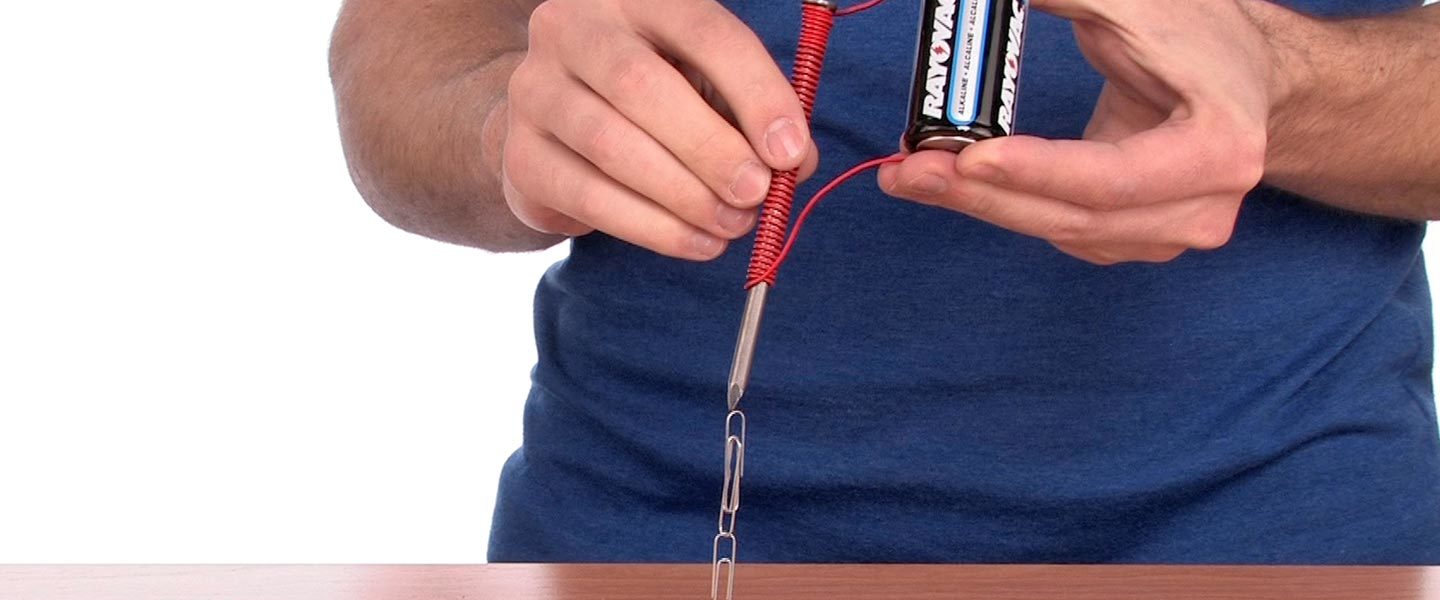
It’s not often that you can make something so complex out of such simple materials. Electricity and magnetism have been used by people everywhere to do work for a very long time. The funny thing is that both are complicated and very few really understand either one. It’s probably easiest just to put the pieces together and then be amazed at what they can do together.
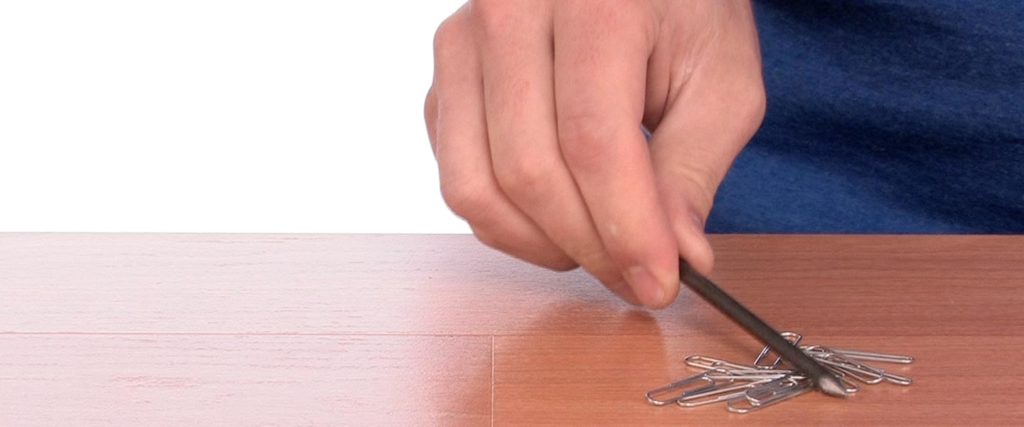
Touch the nail to the paper clips to make sure it’s not magnetic. You can stir the clips with the nail but it won’t pick them up at all.
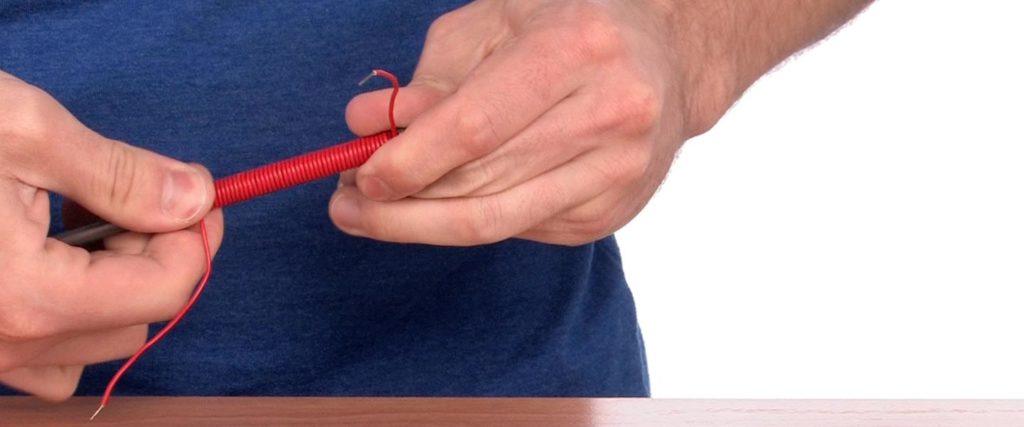
Strip about a half-inch (13 mm) of the insulation off of both ends of the wire. Don’t cut the wire; just cut the insulation.
Start about 2″ (50 mm) from one end of the wire and tightly wrap it around the nail. Leave another 2″ (50 mm) tail at the other end of the wire, too. You want to make the coils tight and close to each other so there are no gaps between them. About 2/3 of the nail should be wrapped in wire.
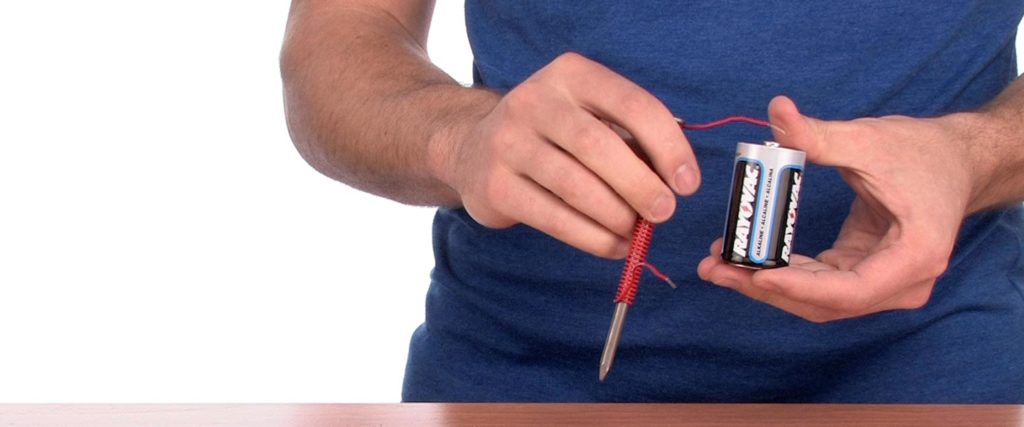
Introduce a current into the wire by holding the bare wire ends to the poles of the battery. See the Safety Notes below!
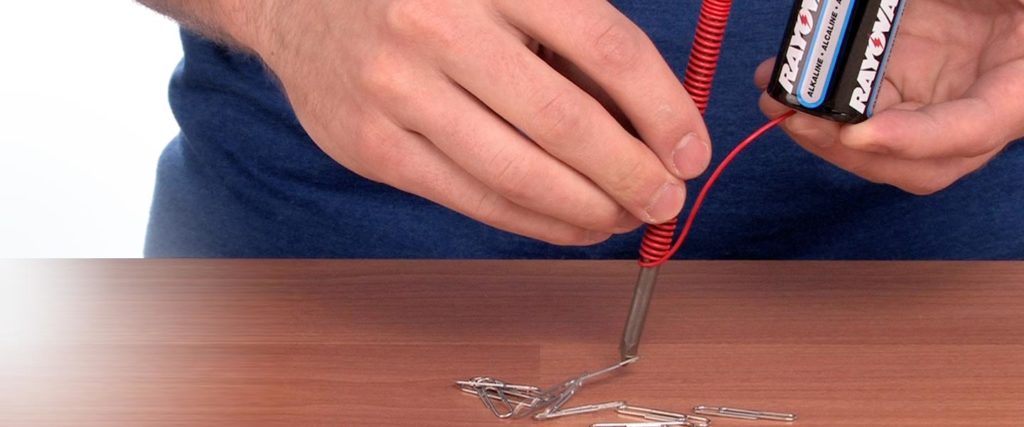
With the wire connected to the battery, pass the nail through the paper clips again and note changes in what happens. Your homemade magnet picks up the paperclips!
What you created using the tightly wound wire around the nail is called a solenoid [sōl-ë-noid]. When an electric current passes through the wire, it creates a magnetic field in the metal core (the nail). When the wire is wrapped around the iron nail and the battery is strong enough, you create a simple electromechanical solenoid. These “electro” magnets are typically weak but are useful over short distances – like picking up paperclips. Electromagnets can, however, be made to become very powerful magnets that have industrial applications.
A Homemade Magnet is a pretty cool activity but it’s not a science fair project. You create a science fair project by identifying and testing variables. A variable is something that might change the outcome. Consider some of the variable options you might test and write up for a science fair project.
These are just a couple of ideas and you certainly aren’t limited to them! Come up with your own variable to test. Remember, you can change only one variable for each test while making sure that all the other factors in your test remain the same!
Be aware that touching a wire to both poles of a battery causes a “short circuit” that quickly drains the battery of its power. The current can also heat up the wire (due to resistance) to the point where it will burn your fingers as you hold it on the poles. It’s possible that the load you put on the wire making the solenoid will reduce the heat produced but be aware of possible injury.